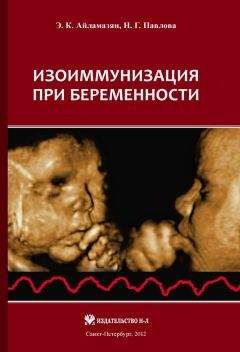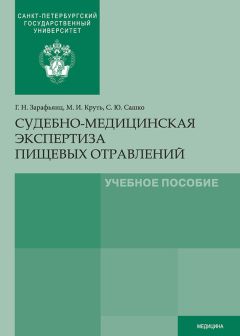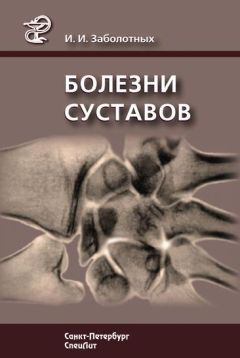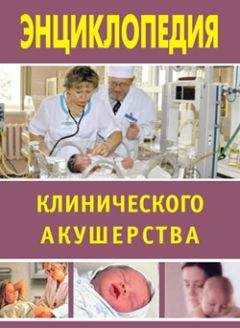Ознакомительная версия.
При ABO несовместимости крови плода и матери у новорожденного преобладает легкое течение гемолитической болезни, проявляющееся желтушным окрашиванием кожных покровов, умеренным, часто длительным повышением билирубина в крови. Печень и селезенка у ребенка, как правило, не увеличиваются. В редких случаях наблюдается умеренная анемия.
При тяжелом течении заболевания, развивающегося, преимущественно, при Rh-несовместимости крови матери и плода, клинические проявления могут наблюдаться и нарастать уже с первых часов жизни новорожденного. При этом у ребенка наблюдается бледно-желтушный цвет кожных покровов и слизистых, увеличивается печень и селезенка. В крови быстро накапливается непрямой билирубин, обладающий выраженным токсическим действием на ткани, богатые липидами, такие как мозг и печень. При этом непрямой билирубин не выводится почками. Накопление непрямого билирубина обусловлено нарушением процессов его перевода в прямой билирубин. Рефлексы и мышечный тонус у новорожденного, как правило, снижены. В клинической картине заболевания преобладают при анемической форме симптомы, обусловленные эритро– и тромбоцитопенией, при желтушной и желтушноанемической форме – гипербилирубинемией.
При отсутствии лечения гипербилирубинемия может нарастать. Считают, что патогенное действие непрямого билирубина на организм основывается на выключении из метаболизма ферментов, обеспечивающих тканевое дыхание. В результате этого прекращается окислительное фосфорилирование. При крайней степени тяжести заболевания «гепатотоксичный гемопоэз» может стать причиной развития печеночной недостаточности и билирубиновой энцефалопатии. При этом жирорастворимый неконъюгированый билирубин накапливается в базальных ядрах мозга. В крайне тяжелых случаях возможно развитие ядерной желтухи, первыми симптомами которой у новорожденного являются снижение сосательного рефлекса и ригидность затылочных мышц. В дальнейшем, при отсутствии лечения, у ребенка прогрессируют гиперестезия, беспокойство, появляются глазодвигательные нарушения («симптом заходящего солнца»), расстройства дыхания и сердцебиения на фоне судорог. Температура тела повышается до 40–41 °C. Она обусловлена пирогенным влиянием билирубина.
В агональном периоде у новорожденных наблюдаются геморрагические явления в виде кровоизлияний в кожу, кишечник, легкие с развитием отека и пневмонии с последующим летальным исходом.
В отдельных случаях может наблюдаться относительное выздоровление. Однако в последующем у ребенка проявляются неврологические нарушения, обусловленные токсическим влиянием билирубина, от минимальных мозговых дисфункций и небольших моторных нарушений до значительных расстройств, сочетающихся с глухотой и нарушением интеллекта. При отечной форме гемолитической болезни в случае живорождения, чаще в результате преждевременных родов, в клинической картине заболевания преобладает отечный синдром – выраженный асцит, сердечная недостаточность с наличием гидроперикарда, отека легких с гидротораксом, а также значительное увеличение печени и селезенки, резкая бледность кожных покровов. Новорожденный часто погибает на фоне развития полиорганной недостаточности.
Таким образом, неблагоприятные перинатальные исходы при изоиммунизации во время беременности главным образом обусловлены в антенатальном периоде развитием у плода тяжелого анемического синдрома, а в постнатальной жизни – гипербилирубинемией, сопровождающейся поражением центральной нервной системы с последующей полиорганной недостаточностью.
1. Акушерство: национальное руководство / ред. Э. К. Айламазян, В. И. Кулаков, В. Е. Радзинский, Г. М. Савельева. – М.: ГЭОТАР-Медиа, 2007.– 1200 с.
2. Акушерство: учебник для медицинских вузов / Э. К. Айламазян [и др.].– 6-е изд. – СПб.: Спецлит, 2007. – 528 с.
3. Минеева Н. В. Группы крови человека. Основы иммуногематологии. – СПб., 2004. – 188 с.
4. Сидельникова В. М., Антонов А. Г. Гемолитическая болезнь плода и новорожденного. – М.: Триада-Х, 2004.– 191 с.
5. Analysis of immunoglobullin class, IgG subclass and titre of HPA-la antibodies in alloimmunized mothers giving birth to babies with or without neonatal alloimmune thrombocytopenia / Proulx C. [et al.] // Br. J. Haematology. – 1994.– Vol. 87.– P. 813–817.
6. Anti-D concentration in mother and child in haemolytic disease of the newborn / Hughes-Jones N. C. [et al.] // Vox Sanguinis. – 1971.—Vol. 21.—P. 135–140.
7. Anti-D concentrations in fetal and maternal serum and amniotic fluid in rhesus allo-immunised pregnaneies / Economides D. L. [et al.] // Br. J. of Obstet. and Gynaecol. – 1993. – Vol. 100. – P. 923–926.
8. Antigen topography is critical for interaction of IgG2 anti-red-cell antibodies with Fey receptors / KumpelB.M. [et al.] // Br. J. of Haematology. – 1996. —Vol. 94.—P. 175–183.
9. Billington W.D. The normal fetomaternal immune relationship // Bailliere’s Clinics Obstet. Gynaecol. – 1992.– Vol. 6.—P. 417–438.
10. Blockade of clearance of immune complexes by an anti-FcR monoclonal antibody / Clarkson S. B. [et al.] // J. Experim. Medicine. – 1986. – Vol. 164. – P. 474–489
11. Clinical significance of IgG Fc receptors and FcyR-directed immunotherapies / Deo Y. M. [et al.] // Immunology Today. – 1997. – Vol. 18. —P. 127–135.
12. Correlation of serological, quantitative and cell-mediated functional assays of maternal alloantibodies with the severity of haemolytic disease of the newborn / Hadley A. G. [et al.] // Br. J. of Haematology. – 1991. —Vol. 77.—P. 221–228.
13. Daniels G.L., Hadley A. G., Green C.A. Fetal anaemia due to anti-K may result from immune destruction of early eryth-roid progenitors // Transfusion Medicine. – 1999.– Vol. 9, suppl. 1.– P. 16.
14. Davenport R. D., Kunkel S. L. IgG receptor roles in red cell binding to monocytes and macrophages // Transfusion. – 1994.– Vol. 34.—P. 795.
15. Denomme GRyan G., Fernandes B. The FcyRIIa-Hisl31 allotype is overexpressed in infants with ABO hemolytic disease of the newborn // Blood. – 1997. – Vol. 90. – P. 472–473.
16. Detection of fetal erythrocytes in maternal blood postpartum with the fluorescence-activated cell sorter / Medearis A. L. [et al.] // Am. J. of Obstet. Gynecol. – 1984.—Vol. 148.—P. 290–295.
17. Dooren M.C., Engelfriet C. P. Protection against RhD-haemolytic disease of the newborn by a diminished transport of maternal IgG to the fetus // Vox Sanguinis. – 1993.– Vol. 65.—P. 59–61.
18. Erythropoietic suppression in fetal anaemia because of Kell alloimmunization / Vaughan J.L. [et al.] // Am. J. Obstet. Gynecol. – 1994.—Vol. 171. —P. 247-52.
19. Galactosylation of human IgG monoclonal anti-D produced by EBV-transformed B-lymphoblastoid lines is dependent on culture method and affects Fey receptor-mediated functional activity / Kumpel В. M. [et al.] // Human Antibodies and Hy-bridomas. – 1994. – Vol. 5.– P. 143–151.
20. Ghetie V., Ward E. S. FcRn, the MHC class I-related receptor that is more than an IgG transporter // Immunology Today. – 1997.—Vol. 18.—P. 592–598.
21. Hilden J.O., Gottvall I, Lindblom B. HLA phenotypes and severe Rh (D) immunization // Tissue Antigens. – 1995.– Vol. 46.—P. 3131–3315.
22. HulettM. О., Hogarth P.M. Molecular basis of Fc receptor function // Advances Immunology. – 1994.– Vol. 57.– P. 1–127.
23. Human IgG subclasses in maternal and fetal serum / Morell A. [et al.] // Vox Sanguinis. – 1971. – Vol. 21. – P. 481–492.
24. Inhibition of the monocyte chemiluminescent response to anti-D sensitized red cells by Fey receptor I-blocking antibodies which ameliorate the severity of haemolytic disease of the newborn / Shepard S.L. [et al.] // Vox Sanguinis. – 1996.– Vol. 70.—P. 157–163.
25. Jefferis R., Lund J., Pound J.D. IgG-Fc-mediated effector functions, molecular definition of interaction sites for effector ligands and the role of glycosylation // Immunology Reviews. – 1998. —Vol. 163.—P. 59–76.
26. Kohler P. F., Farr R. S. Elevation of cord over maternal IgG immunoglobulin: evidence for an active placental IgG transport // Nature. – 1966. – Vol. 210.– P. 1070–1071.
27. Kurlander R. J. Blockade of Fc receptor-mediated binding to U-937 cells by murine monoclonal antibodies directed against a variety of surface antigens // J. of Immunology. – 1983.– Vol. 131.—P. 140–147.
28. Lubenko A., Contreras М., Rodeck С. H. Transplacental IgG subclass concentrations in pregnancies at risk of haemolytic disease of the newborn // Vox Sanguinis. – 1994. – Vol. 67. – P. 291–298.
29. Male fetuses are particularly affected by maternal alloimmunization to D antigen / Ulm B. [et al.] // Transfusion. – 1999. —Vol. 39. —P. 169–173.
30. Mapping the site on human IgG for binding of the MHC class I-related receptor, FcRn / Kim J-K. [et al.] // Eur. J. Immunology. – 1999.– Vol. 29.– P. 2819–2825.
31. Maternal antibodies against fetal blood group antigens A or B, lytic activity of IgG subclasses in monocyte-driven cytotoxicity and correlation with ABO haemolytic disease of the newborn / Brouwers H. A. [et al.] // Br. J. Haematology. – 1988. – Vol. 70.—P. 465–469.
32. Misleading results in the determination of haemolytic disease of the newborn using antibody titration and ADCC in a woman with anti-Lub / Novotny V. M. J. [et al.] // Vox Sanguinis. – 1992. —Vol. 62. —P. 49–52.
33. Molecular basis for a polymorphism of human FcyRII (CD32) / Warmerdam P. A. M. [et al.] // J. Experim. Medicine. – 1990. —Vol. 172.—P. 19–25.
34. Nance S. J., Arndt P. A., Garratty G. Correlation of IgG subclass with the severity of hemolytic disease of the newborn // Transfusion. – 1990.– Vol. 30.– P. 381–382.
35. Parinaud J. [et al.] IgG subclasses and Gm allotypes of anti-D antibodies during pregnancy: correlation with the gravity of fetal disease // Am. J. Obstet. and Gynecol. – 1985.– Vol. 151. —P. 1111–1115.
36. Pollock J. М., Bowman J.M. Anti-Rh (D) IgG subclasses and severity of Rh hemolytic disease of the newborn // Vox Sanguinis. – 1990.—Vol. 59.—P. 176–179.
37. Protection against immune haemolytic disease of newborn infants by maternal monocyte-reactive IgG alloantibodies (anti HLA-DR) / DoorenM. C. [et al.] // Lancet. – 1992.– Vol. 339.—P. 1067–1070.
38. Ramsey G., Sherman L. A. Anti-D in pregnancy: value of antibody titres and effect of fetal gender // Transfusion. – 1999. – Vol. 39.—P. 105.
39. Ravetch J. V, Perussia B. Alternative membrane forms of FcyRIII (CDI6) on human NK cells and neutrophils, cell-type specific expression of two genes which differ in single nucleotide substitutions // J. Experim. Medicine. – 1989.– Vol. 170.—P. 481–491.
40. Renkonen К. O., Seppala M. The sex of the sensitizing Rh-positive child // Annals of Medicine. – 1962.– Vol. 40.– P. 108–118.
41. Renkonen К. O., Timonen S. Factors influencing the immunization of Rh-negative mothers // J. of Medical Genetics. – 1967.—Vol. 4.—P. 166–176.
42. Rhesus Du incompatibility in a newborn with high levels of anti-D and a benign clinical course / Dias R. [et al.] // Vox Sanguinis. – 1986. – Vol. 50. – R 52–53.
43. Rochna E., Hughes-Jones N. C. The use of purified 1251-la-belled anti-y globullin in the determination of the number of D antigen sites on red cells of different phenotypes // Vox Sanguinis. – 1965.—Vol. 10.—P. 675–686.
44. Selective placental transport of maternal IgG to the fetus / Williams P. J. [et al.] // Placenta. – 1995. – Vol. 16. – P. 749–756.
45. Shepard S. L., Hadley A. G. Monocyte-bound monoclonal antibodies inhibit the FcyRI-mediated phagocytosis of red cells: the efficiency and mechanism of inhibition are determined by the nature of the antigen // Immunology. – 1997.—Vol. 90.– P. 314–322.
Ознакомительная версия.





